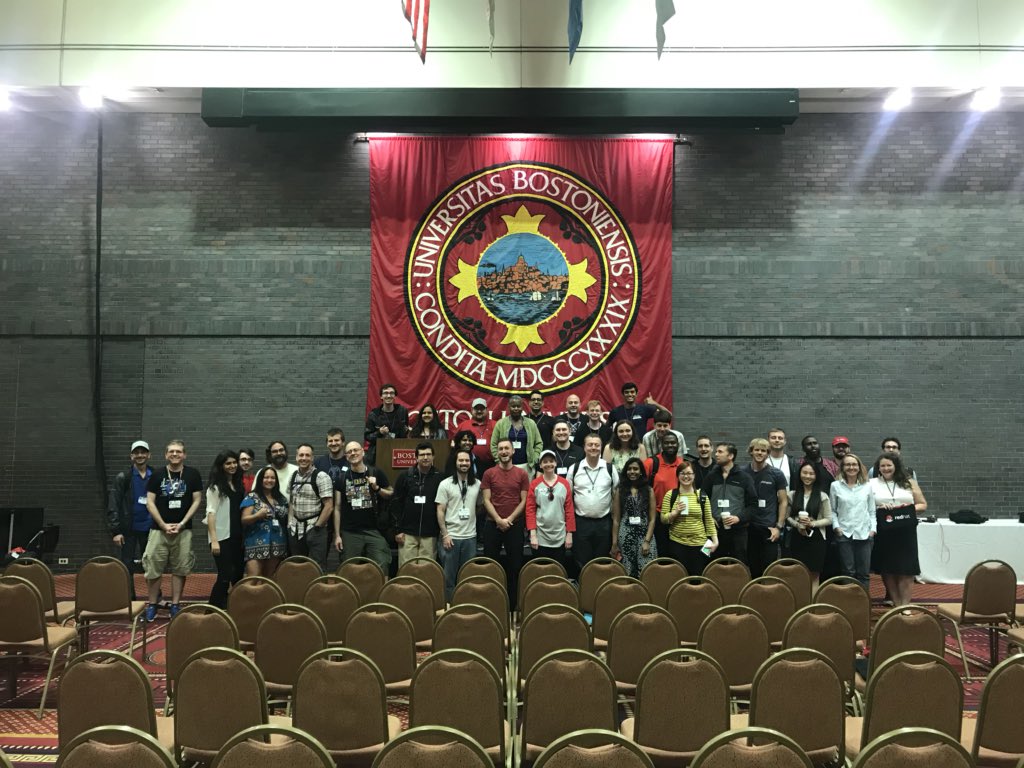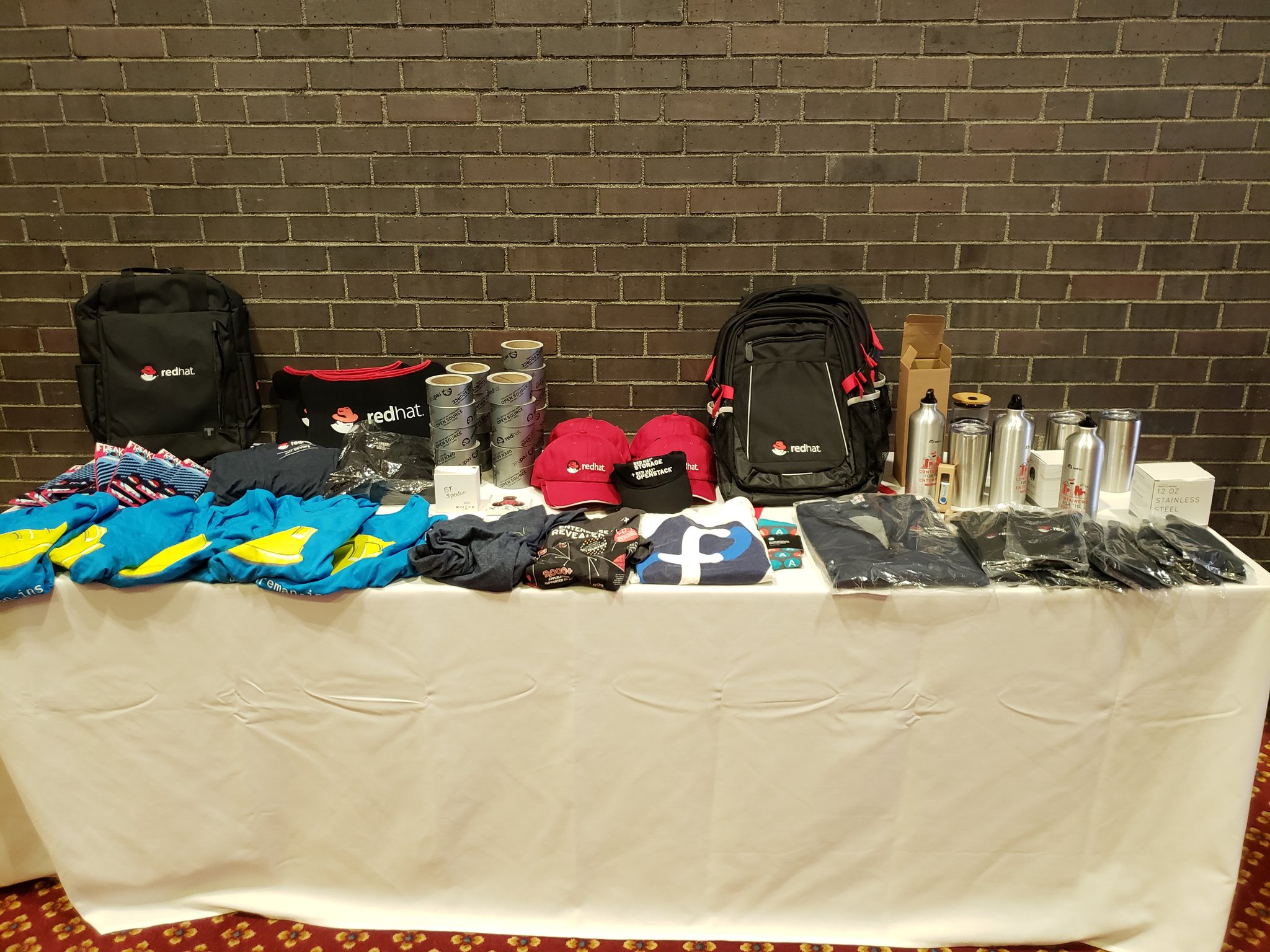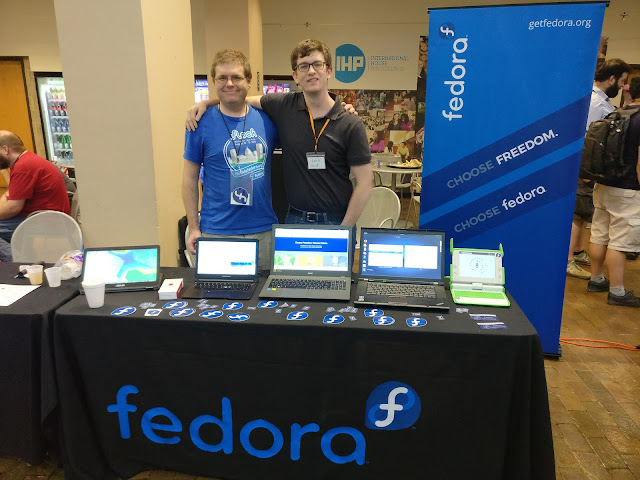 |
| The awesome stickers, pamphlets, and Fedorator drew lots of attention. |
The event went very well. Although many people stopping by were Fedora contributors, use Fedora, or had used Fedora, even some contributors learned new things from us Fedora Ambassadors. A video looping over Fedora 29's features was on display on the monitor.
Examples of some conversation points were:
- We were right next to the Python booth all 3 days. Fedora loves Python. We literally had stickers for this thanks to Miro, who is involved in both communities and helped out with their booth too. The Python robotics on the table & on the floor drew many people over, and then we discussed Fedora also.
- Multiple people asked about the Python version in Fedora & RHEL/CentOS. Many wanted the latest version, but some wanted older versions. I mentioned the versions with separate package names, and software collections. But I also pointed out Fedora's (and presumably RHEL/CentOS's) new long-term solution; modularity & AppStreams.
- Many current Fedora users were unfamiliar with the ThunderBolt "User Authorization" support added in Fedora 28. This was prominently shown in the video. Great work by the GNOME & bolt developers, after being implemented in the kernel.
- A technical writer for IP phones came by. She was particularly interested in the Czech fonts, and said Fedora's were pretty good, whereas most are terrible. She was very curious about the docs on our website, the migration from Publican to AsciiDoc, and what the ambassadors do.
- One user switched from Windows to Fedora 6 months ago. His driving reason was to do his DevOps work better. He commended Fedora on being easy to install. He asked for an equivalent of mremote for multiple remote desktop sessions. I recommended Remmina from Fedora's repos or Flatpak.
- One user uses Linux Mint. He tried Fedora on a machine with 2GB of RAM but it ran too slowly. I recommended the Fedora MATE spin for him.
- Mohan Boddu came up. As a packager, I had repeatedly seen his name. He answered my questions about release engineering.
- Fedora Silverblue was asked about a few times. People asked how it compared to other distros meant for containerized apps.
- The Fedorator was as always, a great conversation starter. Multiple people flashed Fedora to their USB key.
 |
| The Fedorator flashing Fedora. Thank you Sanqui! |
I would also like to point out some pleasant surprises with the technical setup:
- The video was being shown from a Raspberry Pi (running Fedora of course). In North America, it is shown on a laptop; which takes up more table space. (The NA ambassadors have separate event boxes from Europe.) Previously I had worked on a Raspberry Pi + Motorola Lapdock for NA (& planned to gift it), but it ran into cabling issues with the non-standard cables/adapters (jiggling a cable slightly would cut USB keyboard & mouse data.) The use of a real monitor & USB hub solves this problem.
- The Fedorator is now running Fedora rather than Android.
Thank you very much to Miro for helping out so much at the booth also. It was a learning experience to see what non-English speakers need from Fedora, and how European Ambassadors do things differently in technical ways.
I'll end this post with an awesome slide from a presentation by Fedora contributors:











